
october 9, 2004–JANUARY 2, 2005
relations
Q. How do the paintings relate to each other?
A. Our analysis reveals that the paintings were in fact not created by a single artist. Instead, they were probably painted by different artists using a common source--perhaps a drawing of the Virgin and Child--that circulated within one or among several workshops. This suggests that there was a lucrative market for this particular composition of the Virgin and Child. The variations in the backgrounds and details were likely introduced to satisfy the wishes of individual buyers.
figures
A tracing of the Virgin and Child in the Williamstown picture, which was then overlaid on the other panels, confirms that the central figures in the different paintings are exact-scale replicas of each other.
 Williamstown
Williamstown
 Lille
Lille
 Bruges
Bruges
 Minneapolis
Minneapolis
Taking a Closer Look
In the late fifteenth century it was not uncommon for a master artist to employ several assistants to work with him in his workshop. Painters in workshops often had collections of drawings that they could use when developing the composition of a painting. These drawings could be replicated by a making a grid and copying the composition within each square onto the larger panel.
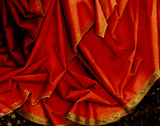
Williamstown
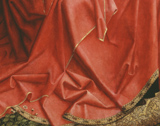
Lille
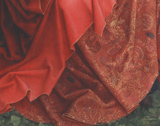
Bruges
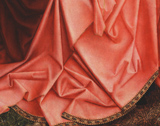
Minneapolis
heads
While the Virgin Mary's head tilts at nearly the exact same angle in three of the paintings, it is more upright in the Williamstown painting.
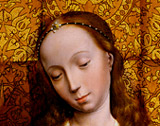
Williamstown
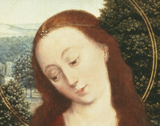
Lille
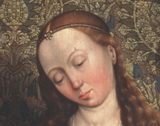
Bruges
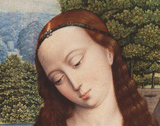
Minneapolis
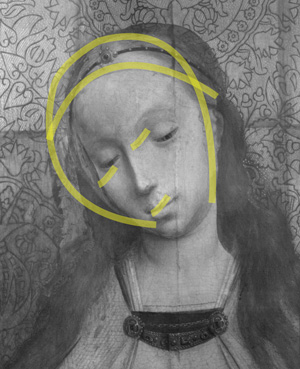
Williamstown (Infrared © Ron Spronk)
Taking a Closer Look
Infrared reflectography (exposing pictures to infrared rays) reveals that the Virgin's head in the Williamstown panel originally tilted at the same angle as the other three paintings. The yellow highlighting shows the original drawing under the paint layers, outlining the earlier position of the head. This picture was reworked after it was completed, perhaps to conform to the taste of a potential buyer.
hands
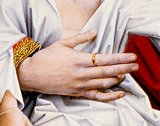
Williamstown
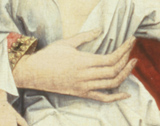
Lille
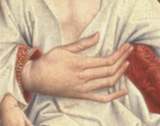
Bruges
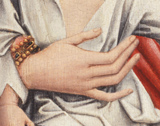
Minneapolis
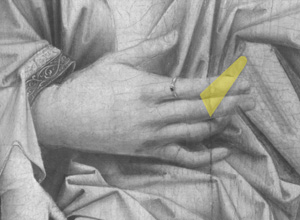
Williamstown (Infrared © Ron Spronk)
Taking a Closer Look
Infrared reflectography (exposing pictures to infrared rays) reveals that the Virgin's right hand in the Williamstown panel originally was bent at the same angle as in the other three paintings. The yellow highlighting shows the original drawing under the paint layers, outlining the earlier position of the finger. This picture was reworked after it was completed, perhaps to conform to the taste of a potential buyer.
toes
When looking closely at the feet of the Christ Child, we see that the toes vary in length from painting to painting.
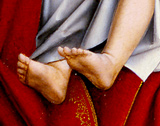
Williamstown
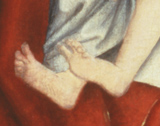
Lille
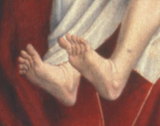
Bruges
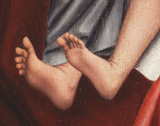
Minneapolis
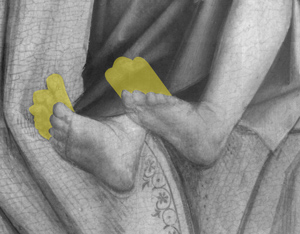
Williamstown (Infrared © Ron Spronk)
Taking a Closer Look
Infrared reflectography (exposing pictures to infrared rays) reveals that the Christ Child's toes in the Williamstown panel were originally longer, like they are in the other three paintings. The yellow highlighting shows the original drawing under the paint layers, outlining the earlier position of the toes. This picture was reworked after it was completed, perhaps to conform to the taste of a potential buyer.
foliage
Even the treatment of the foliage varies in the paintings, belying the Master's very name. The theory, first advanced by Edouard de Callataÿ in 1972, that the Master was a landscape specialist who painted the backgrounds of the panels, seems unfounded.
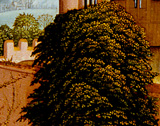
Williamstown
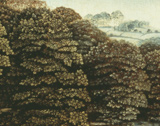
Lille
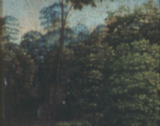
Bruges
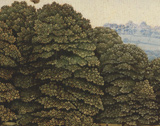
Minneapolis
Taking a Closer Look
X-rays of the Williamstown and Minneapolis pictures show that two different artists probably painted the trees. The artist who rendered the foliage in the Williamstown panel painted branches underneath the foliage, while the artist for the Minneapolis image seems to have painted only leaves.

Williamstown (X-ray)
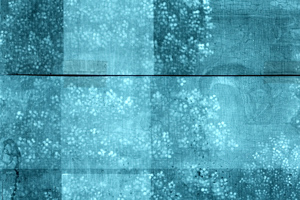
Minneapolis (X-ray)
